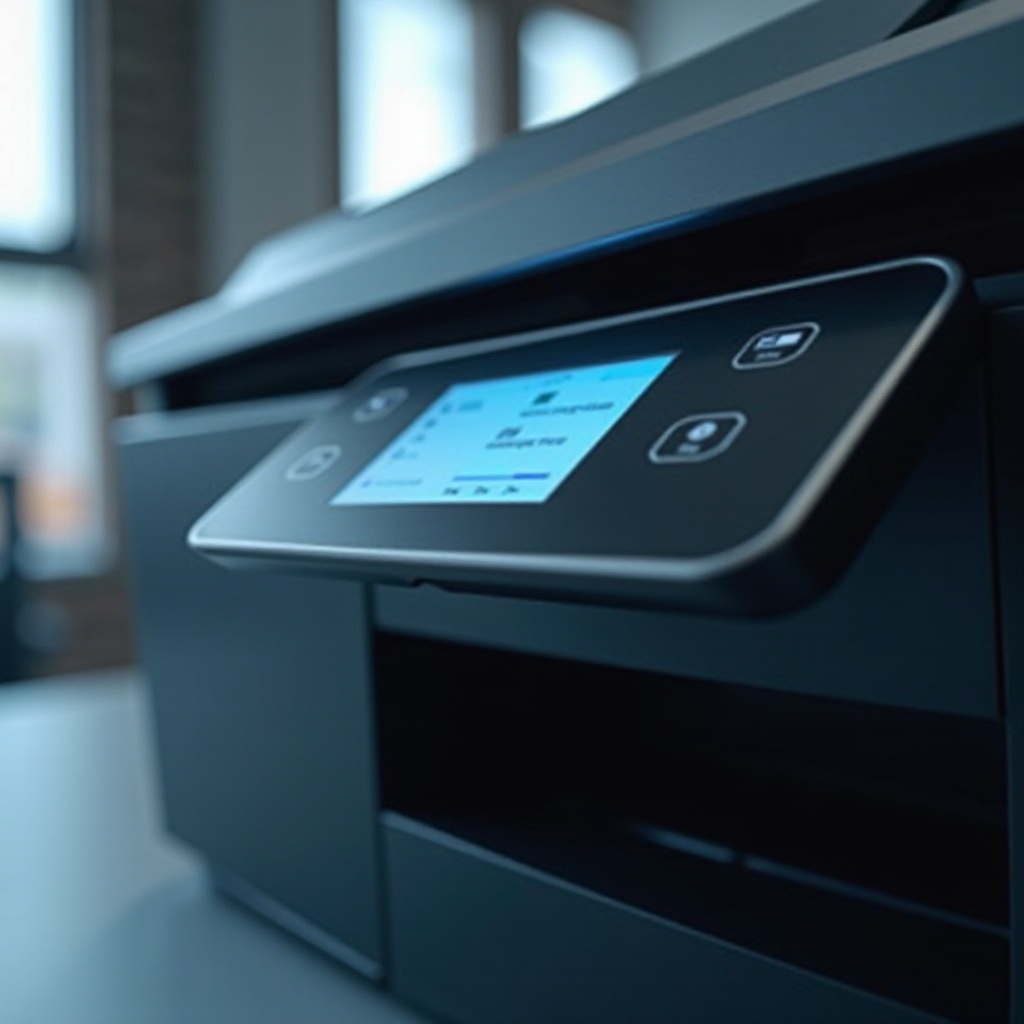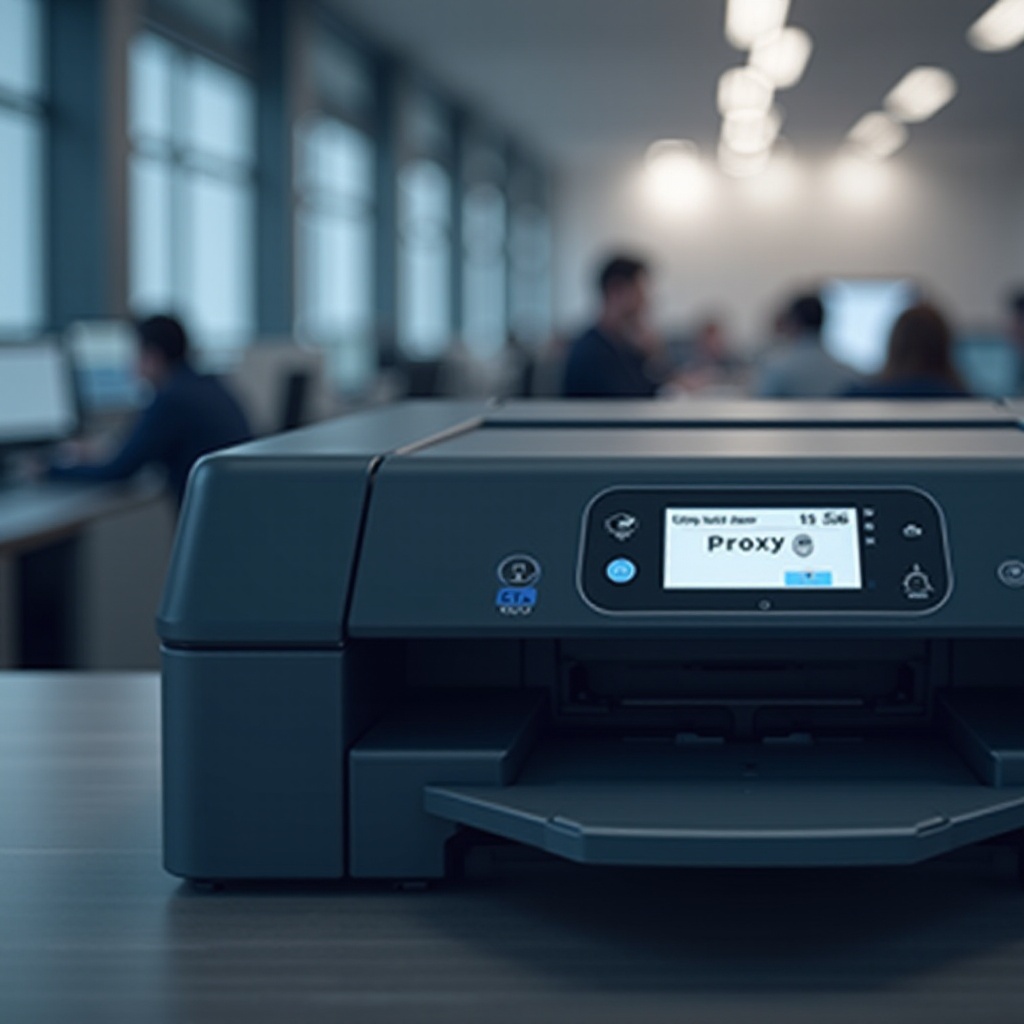Introduction
In today’s digital age, utilizing network-connected printers is commonplace, and understanding network configuration jargon like ‘proxy address’ is crucial for efficient use. Users often find themselves puzzled by the technical particulars that accompany secure and efficient network management. A proxy address on a printer acts as a linchpin, securing data transactions and bolstering performance. This comprehensive guide will help you unravel what a proxy address is, its significance, and how to set it up, providing you with the confidence to ensure your network printer functions effectively and safely.

Understanding the Basics of Printer Networking
Importance of Network Configurations
Network configurations are the backbone of seamless and secure device communications, including printers, in a modern work environment. An ideal configuration guarantees that operations occur without disruptions, delay, or security loopholes. In workplaces, where one printer often serves multiple computers, sound network configurations safeguard operations by preventing disruptions and maintaining data integrity, highlighting the necessity of understanding how to manage these settings effectively.
Role of Proxy Servers in Networks
Proxy servers serve as crucial intermediaries mediating between devices, the internet, and local networks. For printers, a proxy server enhances security by managing requests, filtering data, and optimizing bandwidth consumption. This intermediary step secures printer connections by routing requests through the proxy server, dramatically reducing unauthorized entry risk and keeping the network healthy. Grasping this vital role of proxy servers sheds light on why proxy addresses are essential in printer setups, a sentiment echoed throughout network management best practices.
What is a Proxy Address on a Printer?
Definition and Explanation
A proxy address for a printer is like a virtual gatekeeper, a specific IP address facilitating communication between the printer and other devices or networks. By directing the flow of data to and from the printer, the proxy address enhances security and streamlines network efficiency. In environments where printers serve as shared resources, the proxy address ensures only authorized devices can interact with the printer, preserving the integrity and security of operations—a crucial aspect for both private usage and business contexts.
Functions and Benefits
The primary role of a proxy address is mediating data exchange to secure and control access. The benefits include heightened security as it hides the printer’s real IP address from external threats. Moreover, it efficiently manages data to decrease traffic congestion and bolster network performance. These advantages are invaluable for businesses, as they translate into secure, reliable, and efficient print jobs, ensuring continuous productivity and robust data protection efforts.
How to Set Up a Proxy Address for Your Printer
Setting up a proxy for your printer can be effortlessly accomplished with proper guidance. Here’s an easy-to-follow guide for both Windows and Mac users, helping you through this necessary configuration process.
Step-by-Step Guide for Windows
- Open ‘Settings’ and select ‘Devices.
- Navigate to ‘Printers & Scanners.
- Choose your printer and click ‘Manage.
- Head to ‘Printer Properties’ and pick the ‘Ports’ tab.
- Click ‘Configure Port’ and input the proxy address in the specified area.
- Save your changes and exit.
Step-by-Step Guide for Mac
- Access ‘System Preferences’ and select ‘Printers & Scanners.
- Pick your printer from the list.
- Click ‘Options & Supplies’ and browse to the ‘Advanced’ tab.
- Enter the proxy address in the dedicated configuration field.
- Click ‘OK’ and close the settings.
With these configurations done, your printer now uses a proxy address, enhancing security and promoting optimal network operation.

Troubleshooting Common Proxy Issues
Even with a seemingly flawless setup, proxy address issues may arise. Becoming knowledgeable about these common problems and understanding their solutions can significantly reduce downtime and frustration.
Common Problems and Solutions
- Incorrect Proxy Address: Ensure the proxy settings are devoid of typos or erroneous data input.
- Connectivity Issues: Verify that network cables are thoroughly secure and the network itself is functioning.
- Unauthorized Access Alerts: Revisit the security settings to confirm that only trusted devices maintain connectivity.
When to Contact IT Support
Should issues endure after troubleshooting, or should you encounter problems beyond your technical comprehension, reaching out to IT support is wise. Professional assistance guarantees efficient problem resolution without endangering the network’s security integrity.
Benefits of Using a Proxy Address with Your Printer
In addition to understanding setup and problem-solving, comprehending the broader advantages that proxy addresses confer can further underscore their essential nature.
Security Advantages
Proxy addresses bolster security by masking a printer’s authentic IP address from various external threats. They consistently stand as a formidable barrier, allowing access only to devices that are authorized and thereby protecting sensitive information against potential breaches.
Network Efficiency and Performance
Insightfully streamlining data flow, a proxy address effectively alleviates network traffic congestion, thereby improving overall performance. This efficiency is especially crucial in busy environments with considerable printing demands, consequently ensuring rapid and seamless service.

Conclusion
A proxy address on a printer transcends mere technicality; it’s an undeniable tool for enhancing network security and efficiency in any modern environment. By familiarizing yourself with, configuring, and adeptly managing proxy addresses, you gain benefits in security and performance, thus guaranteeing that your printing operations remain smooth and secure.
Frequently Asked Questions
What are the risks if a proxy address is not used?
Without a proxy address, printers are directly exposed to network threats, increasing the risk of unauthorized access and data breaches.
Can all printers be configured with proxy addresses?
Most modern network printers support proxy settings. However, older or non-network-enabled models may not have this capability.
How do proxy addresses improve printer security?
Proxy addresses conceal the actual IP of a printer, mediating data exchange to prevent unauthorized access while managing traffic efficiently.


